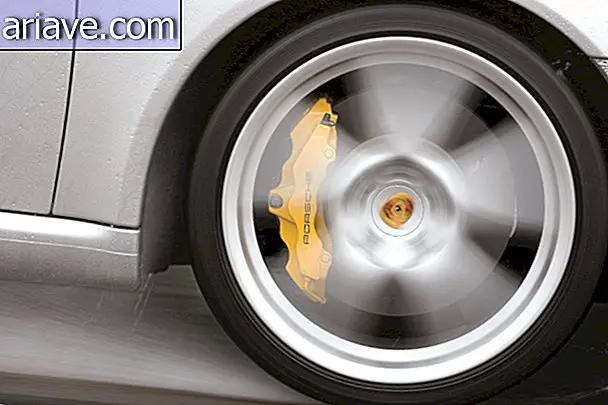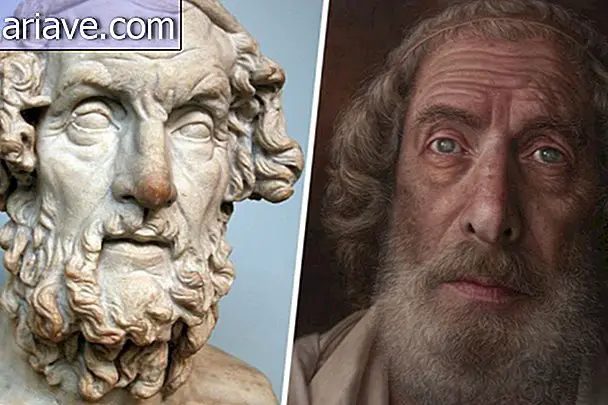10 of the most important cats in the history of science
1. CC
The world's first cloned cat was born in 2001 and was called CC - an allusion to Carbon Cat. It originated from the DNA transplantation of a three-color kitten named Rainbow in an egg whose nucleus had been removed. The "surrogate mother" was named Allie.
Interestingly, the cloned cat had a slightly different coat color: this is because this trait is epigenetic, that is, it changes according to the DNA “wrapping” already inside the womb. In 2011, at age 10, CC gave birth to perfectly healthy kittens.

2. Nicholas Copernicus
Calm down, this is not the famous astronomer who developed the heliocentric theory, in which the planets revolve around the sun: Nicholas Copernicus was the kitten of Edwin Hubble, the guy who discovered that certain nebulae were galaxies outside the Milky Way to the famous telescope. Copernicus got its name because it spread over the roles of Hubble, who, supposedly from that fact, developed the idea that the universe is constantly expanding.

3. Spy Cats
In the 1960s, during the Cold War, the United States launched Operation Acoustic Kittens. Basically, it consisted of training cats with microphones implanted in their ears, a transmitter on a leash, and a tail antenna to spy on the Soviets! Shortly after the first kitten was ready for the mission, he was run over and killed by a taxi. In 1967, the program ceased to exist.

4. Oscar
In 2010, this kitten was the first to receive back paw prostheses attached directly to the bones. The material technology mimics the porosity of deer antlers to fuse meat and metal without the risk of bacterial infection. After that, it has been tested even on humans, who say they are more comfortable than the disposable prostheses that exist today.

5. Glowing cat in the dark
In 2011, scientists decided to modify a kitten's DNA by implanting a monkey gene that would make the animal resistant to feline AIDS (IVF). To find out if the genetic implant would work, another gene from a jellyfish was also placed to mark the cells. The result was a kitten that shines in the dark!
This research is important since in the future genetic alteration may be one of the ways to eradicate human AIDS. Whether the fluorescent cat has become immune to IVF has not yet been proven, but the “fun” part of the experiment shows that it worked.

6. Miss Chippy
Despite its name, this was a male kitten, part of the Endurance crew, commanded by Ernest Shackleton, who sailed for Antarctica in 1914. He belonged to one of the ship's carpenters, Harry “Chippy” McNish, who found the kitten. wrapped around his tools just before he set sail.
MS. Chippy was loved by everyone on the ship except the sled dogs, and he helped keep the ship free of rats. When Endurance called in Buenos Aires, Argentina, a Briton named Perce Blackborow infiltrated the boat and was discovered just 3 days later. Perce and Chippy became great friends, and it is on his shoulders that the cat appears in the only picture of him recorded during the trip.
Unfortunately, the ship eventually got stuck in the ice, forcing Captain Shackleton to drop everything back - including Miss. Chippy For this he received a lot of sardines with sleeping pills and was run alongside the dogs. Your memory remains alive to this day, and a statue of you stands on its owner's grave in New Zealand.

7. Cats in zero gravity
In 1947, the United States decided to study the behavior of cats in zero gravity. In normal environments, felines rotate their bodies and always fall to their feet. The study shows that the lack of gravitational action leaves the kittens disoriented, as seen in the video below.
8. Fighting Cats
In 1891, Thomas Edison joined the team that invented the kinoscope, a pre-cinema instrument. Three years later, he filmed 2 boxing-glove kittens fighting in a makeshift ring. They are kind of great-great-grandfathers of all the animals we would love to see romp on the internet these days.
9. Felicitte
In 1963, the stray kitten of Paris became the first to go to space, through an initiative of the French government. The idea was to study the behavior of the feline, which had brain implants implanted to monitor its neural activity. The rocket traveled more than 150 km into space and returned safely, but Felicitte was sacrificed shortly afterwards so that the electrodes in his brain could be studied.

10. Macak
As a child, Nikola Tesla had a pet kitten named Macak. One day, stroking the pussy's back, he noticed that static electricity could even produce sparks. Delighted with the phenomenon, the young man grew up thinking about it and eventually developed the alternating current, which feeds electronics around the world to this day.












